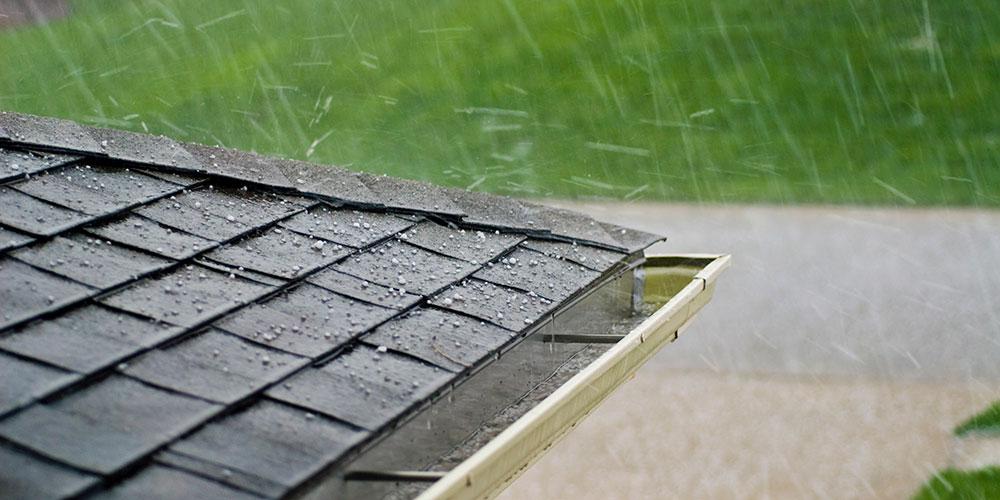The roof of your home is its first line of defense against the elements, and it must withstand various weather conditions, including hailstorms. Hail can cause significant damage to traditional roofing materials, leading to costly repairs and replacements. This is where a hail-resistant metal roof comes into play. In this article, we will explore the benefits and advantages of opting for a hail-resistant metal roof.

Understanding Hail Damage
The Impact of Hail on Roofing Materials
Hail can vary in size, from small pellets to golf ball-sized chunks, and even larger. When hailstones strike traditional roofing materials like asphalt shingles, wood, or clay tiles, they can cause:
- Denting: Hail can leave dents and depressions on the surface of roofing materials, compromising their appearance and functionality.
- Cracking: Impact from hailstones can lead to cracks in materials, making them susceptible to water leaks.
- Granule Loss: For asphalt shingles, hail can strip away the protective granules, reducing their lifespan and effectiveness.
- Leaks: The combination of dents, cracks, and granule loss can result in water infiltration, leading to interior damage.
The Long-Term Consequences
Hail damage, if left unaddressed, can have long-term consequences, including:
- Reduced lifespan of roofing materials.
- Increased risk of leaks and water damage.
- Higher maintenance and repair costs.
- Decreased energy efficiency due to compromised insulation.
- Decreased property value due to the appearance of damaged roofing.
Why Choose a Hail Resistant Metal Roof
Heading: “Unparalleled Hail Resistance”
A hail-resistant metal roof is specifically designed to withstand hailstorms and protect your home. Here’s why it’s a smart choice:
1. Durability
Metal roofing materials, such as steel and aluminum, are inherently strong and resistant to hail impact. They do not crack, dent, or lose granules like traditional roofing materials. This durability ensures that your roof remains intact even in severe hailstorms.
2. Impact Resistance
Hail-resistant metal roofs are designed to meet or exceed industry impact resistance standards. They undergo rigorous testing to ensure they can withstand hailstones of various sizes without sustaining damage.
3. Longevity
Metal roofs have a longer lifespan compared to traditional roofing materials. They can last 40 to 70 years or more with proper maintenance. This longevity reduces the frequency of roof replacements, saving you money in the long run.
4. Energy Efficiency
Many hail-resistant metal roofs are designed with energy efficiency in mind. They are often coated with reflective finishes that can reduce heat absorption, keeping your home cooler in hot weather and potentially lowering your energy bills.
Low Maintenance
Hail-resistant metal roofs require minimal maintenance to keep them in top condition. Periodic inspections and cleaning are usually sufficient to ensure their longevity. Additionally, the lack of granules means you won’t have to deal with issues like granule loss and clogged gutters.
Aesthetically Pleasing
Hail-resistant metal roofs come in a variety of styles, colors, and finishes, allowing you to choose a design that complements your home’s architecture. They can mimic the appearance of traditional roofing materials like shingles, tiles, or cedar shakes, ensuring your roof looks attractive while offering superior protection.
Conclusion
In conclusion, a hail-resistant metal roof is an excellent investment for homeowners looking to protect their homes from the destructive impact of hailstorms. Its durability, impact resistance, longevity, energy efficiency, and low maintenance requirements make it a practical and cost-effective choice. When considering a new roof or roof replacement, opting for a hail-resistant metal roof is a decision that can provide peace of mind and long-term value for your home.



Leave a Reply